Sun-n-Sand Motor Hotel

The Sun-n-Sand Motor Hotel in Jackson, Mississippi is a mid-century modern building located downtown. It features a large colorful sign that has become an iconic landmark for the residents of Jackson.
Harkening back to an era long passed, the hotel is a piece of history. It served as a home for Mississippi legislators and later as a place of gathering for civil rights activists.
Sun-n-Sand Landmark Status

The hotel was designated a Mississippi Landmark in 2020, but it's not on the National Register of Historic Places—although it is eligible. Since 2005, the building has been recognized as an endangered building—and that remains to this day.
The State of Mississippi, which purchased it in 2019, has plans to demolish it in favor of building a parking lot. However, credible developers have plans of their own to purchase the property with some proposed new uses.
Union Terminal
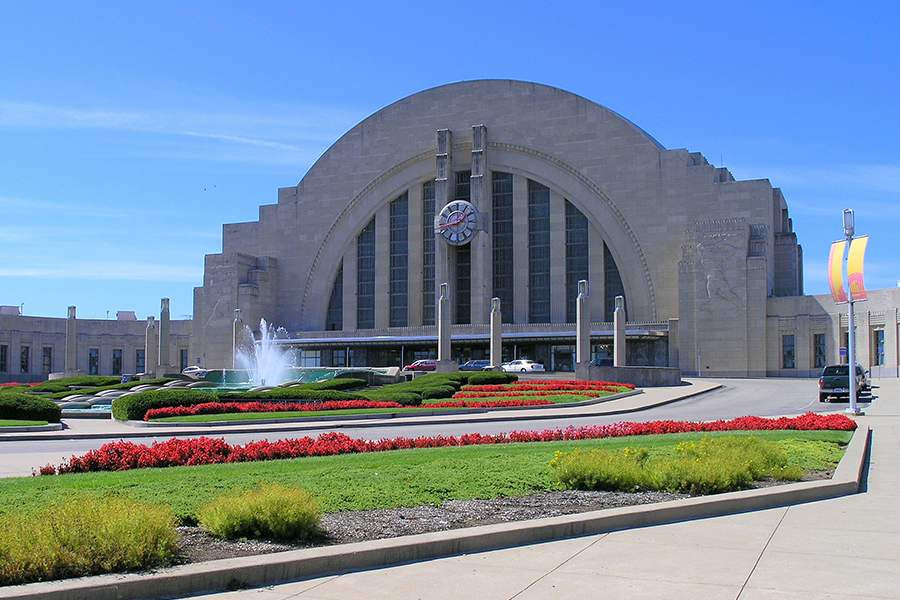
The Union Terminal in Cincinnati, Ohio is one of the greatest architectural treasures of the city and is a striking example of Art Deco style. However, with the decline of passenger travel, the massive size of this Art Deco building became a hindrance.
In desperate need of repairs as late as 2014, voters approved a sales tax increase to raise money for Union Terminal's restoration.
Cincinnati to Save and Repurpose Union Terminal Building
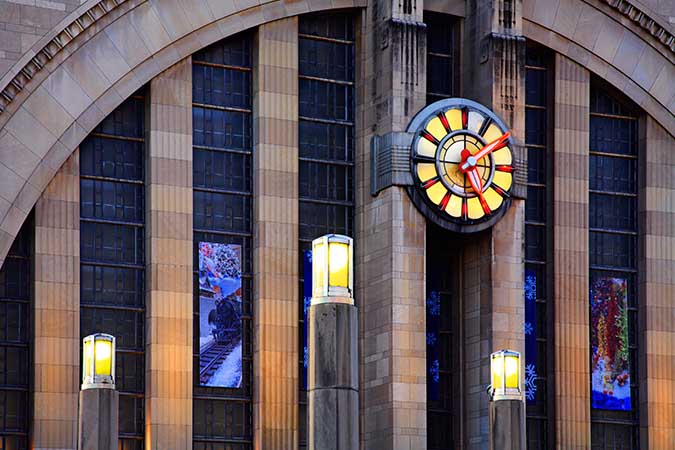
Thankfully, this incredible building was saved. The city of Cincinnati repurposed the building, finishing up a major renovation in 2018. It took two years and cost the city $228 million.
They added in three museums with immersive and interactive exhibits, internationally acclaimed traveling exhibits, and a state-of-the-art OMNIMAX theater.
The Palisades

The Palisades are a geological feature along the New Jersey side of the Hudson River consisting of a 20-mile long sheer vertical cliff wall. Now a U.S. National Landmark, the Palisades were often dynamited during the 1800s as a source of crushed stone for railroad trackbed.
As recent as 2012, large sections of the cliff face have fallen loose.
What to Do at The Palisades
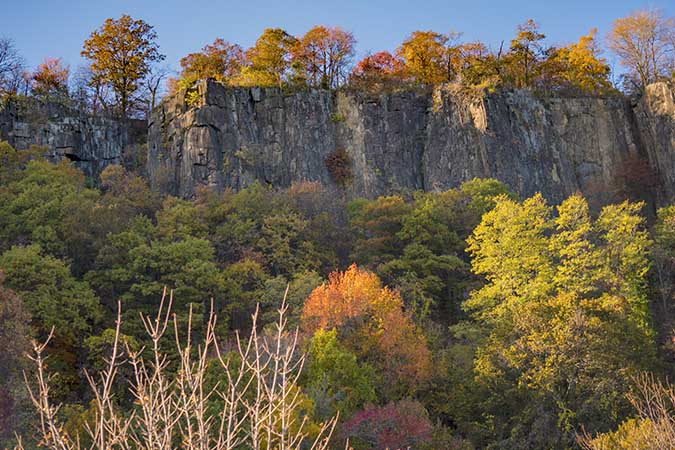
The Palisades park promotes over 30 miles of hiking and ski trails, overlooks, boat launching ramps, and a scenic riverside drive. Once you’re done exploring the beautiful scenery, there are some other incredible places to check out. A few of the highlights include the Women’s Federation Monument, the Hudson River Museum, and iFLY Indoor Skydiving for the adventurous souls.
Shockoe Bottom

This neighborhood is one of Richmond, VA's oldest and was the nation's second-largest slave-trading center. Its historical importance in regard to the history of slavery is slowly being erased by a boom in redevelopment, especially along Tobacco Row since the early 1990s. No buildings relating to America's slave-trade history currently remain. Ongoing efforts are being made to create a museum of slavery in the neighborhood to educate future generations.
(image via Morgan Riley, CC)
What to Do at Shockoe Bottom

Shockoe Bottom is close to water, so there’s a variety of natural attractions while you visit. Shockoe Bottom’s Canal Walk provides a breathtaking view of the James River, with the downtown area serving as a backdrop to the gorgeous water. There’s an abundance of bars and restaurants in the Shockoe Bottom community that make it an ideal entertainment destination. If you’re looking for a more lively and urban scene, the nearby Virginia Commonwealth University will give you just that.
National Negro Opera Company House
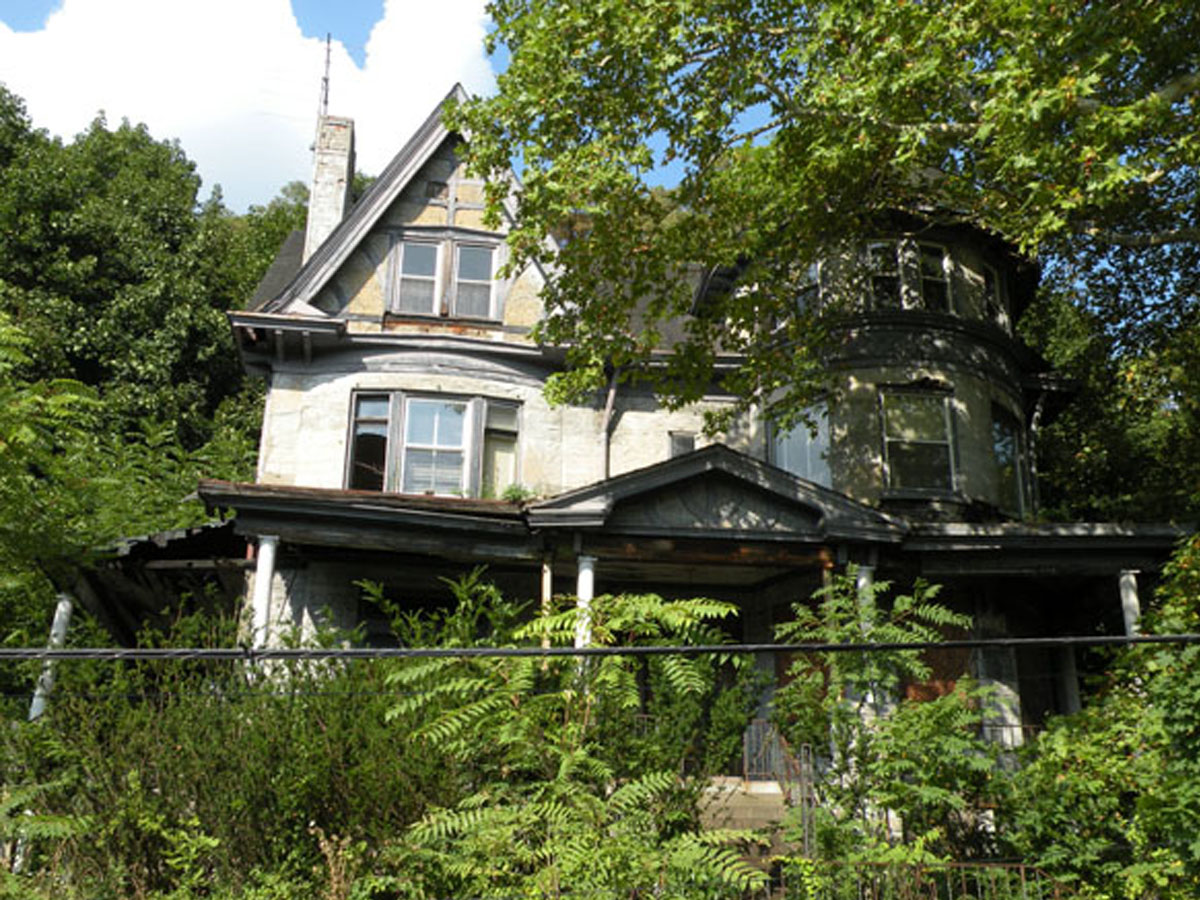
This residential property, built in 1894, had been the headquarters of the National Negro Opera Company from 1941 to 1962, which gives it great historical significance. After the opera left the home, it became a boarding house for celebrities and athletes who could not find accommodations at any of the segregated hotels nearby.
Saving the National Negro Opera Company House

Efforts have been made to save the house as far back as the '90s but the building struggles to stay standing to this day. In 1994, the Pennsylvania Historical and Museum Commission designated the house a historic structure. In 2008, it also became a Pittsburgh City Historic Landmark. However, nothing has been done yet to preserve the house or turn it into a museum. It is completely vacant and continues to deteriorate. Because of this, locals are doing their part to propose new uses for the house to save it from becoming extinct.
Palladium Building
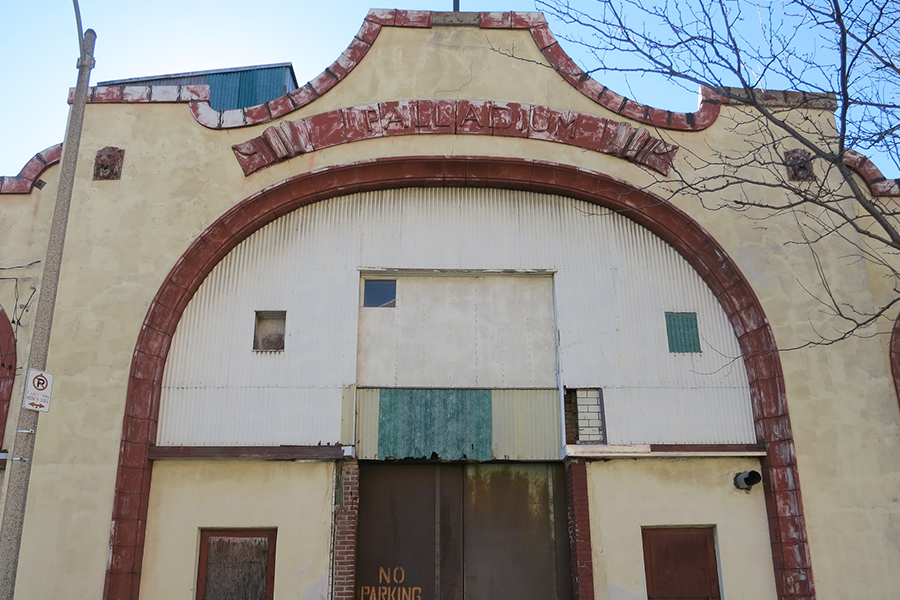
The Palladium was a music club during the height of St. Louis's jazz days. It used to have no fewer than three main shows a night. At its height, in the early '40s and '50s, many famous African-American musicians performed there. Long since neglected, the building remains off any city, state, or national historic preservation list and has since fallen deep into disrepair.
The Future of the Palladium Building

During its time in operation, the Palladium building saw a number of stars walk across its dance floor. These stars included Ella Fitzgerald, the Mills Brothers, Jimmie Lunceford, Nat King Cole, and several other jazz and blues legends. However, in recent years the building has faced the Veterans Administration, who have previously wanted to buy the lot and demolish the building. Thankfully, that hasn’t happened yet. Sadly, while you can’t tour the Palladium building, there’s plenty of other things to do in St. Louis!
Music Hall

Music Hall in Cincinnati, OH is one of America's best examples of Victorian Gothic architecture, as well as being one of the largest of its kind. The building's ornamentation features music-specific details such as trumpets and other instruments in the column capitals. Over the years, the building has not been renovated or refurbished, however, and suffers greatly from water damage.
Events and Tours to Attend at Music Hall

The Music Hall Ballroom hosts a variety of local events throughout the year that you could attend if you’re in town. Or, if there aren’t any events you’re particularly wanting to attend, tours of the Music Hall itself are offered. An outdoor tour of the building is offered from May to October, while indoor tours are offered year-round.
Mokuaikaua Church

This building was built more than 175 years ago as Hawaii's first Christian church. It marks the influence of Western-styled architecture's arrival on the remote island. While Western in inspiration, the construction materials are all locally-specific, adding to the distinctive flair of the building. Like many other older structures in Hawaii, it has been damaged by earthquakes and weather.
Things to Do at Mokuaikaua Church

Surrounded by tourist shops and restaurants, there’s a multitude of things to do around this gorgeous church. The church itself is open for tourists, and it’s filled with a few exhibits inside that are accompanied by a video explaining some of the church’s history.
Historic Wintersburg

Historic Wintersburg was a Japanese-owned village in Hungton Beach, CA, where immigrants settled from the late 1800s, hoping to assimilate into American culture. Notable as one of the few remaining properties acquired before the California Alien Land Law of 1913, the site was operated as a farm until its residents were moved to internment camps during WWII.
(image via the National Trust for Historic Preservation)
The Rezoning of Historic Wintersburg

Recently, the Huntington Beach city council rezoned the area from residential to commercial, allowing for the destruction of the area's six historic structures. Every year the people of Historic Wintersburg host public art installations, holiday parties, and celebrations. You can explore the beautiful Furuta Courtyard and experience the history of the beautiful Historic Wintersburg.
Lewis House (or Frank Lloyd Wright's Spring House)

While this house in Tallahassee, FL may be associated with America's best-known architect, that hasn't helped protect it from the ravages of nature. Wind and water damage from hurricanes has deteriorated the house, particularly the aging wood used to construct the building. While there are, arguably, more famous Frank Lloyd Wright houses, this one is unique as its horseshoe shape was not a well-known or extensive stage of the architect's career.
(image via Swcopeland, CC)
Take a Tour of Lewis House

On the second Sunday of every month, the house opens for public tours while personal tours are available with an appointment. All the money from the tours goes to the Spring House Institute, a nonprofit that seeks to restore the home, complete the original design, and maintain it as a public center for the arts, democracy, and education.
Alazan-Apache Courts
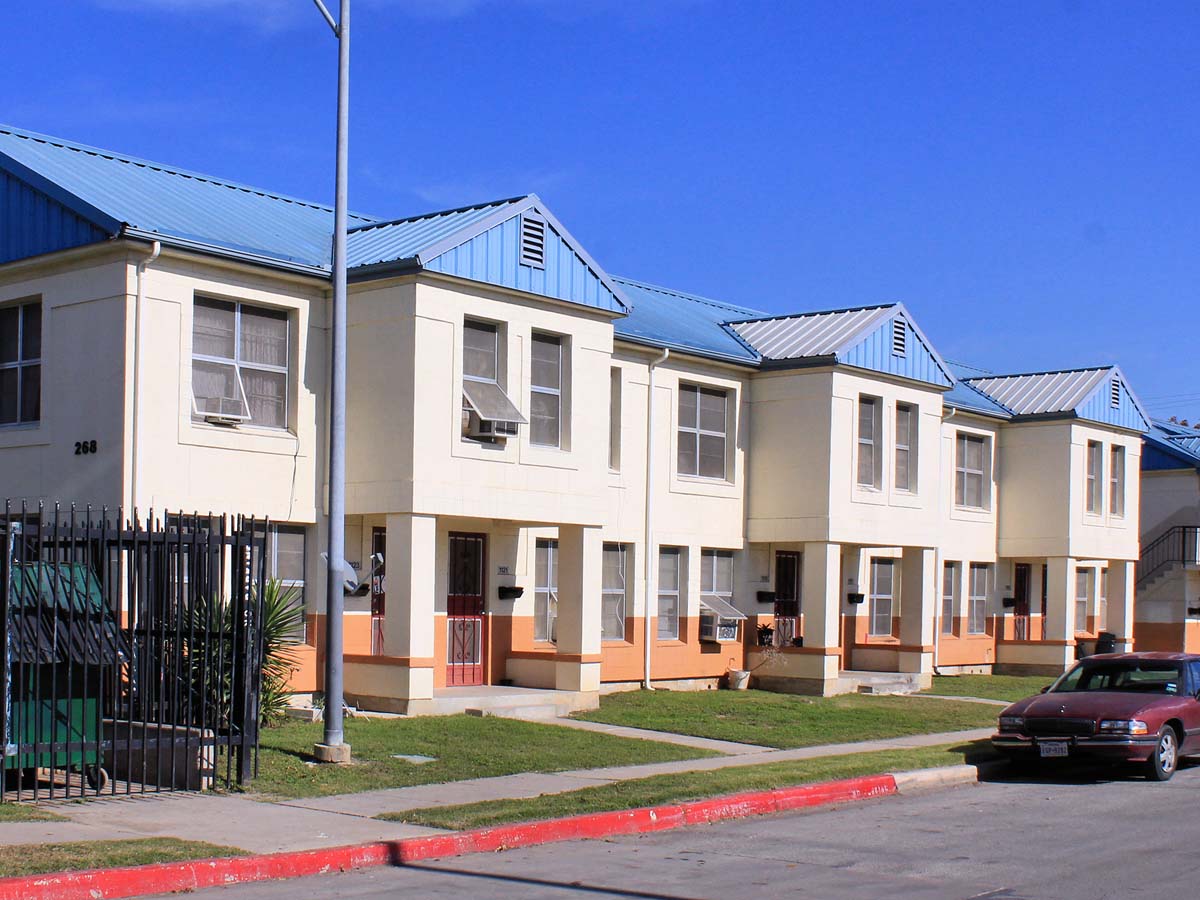
The Alazan-Apache Courts are among the oldest public housing complexes in the country. Located in San Antonio, Texas, the Courts were the first public housing units in the city, built during the times of segregation. Residents at the time were predominantly Mexican-American and struggling with poverty and lack of municipal services. But even with its significant historical significance and the fact that the Courts still provide affordable housing, there are those who would seek to demolish them.
How to Save the Courts

As of 2019, plans to demolish the building in favor of building luxury lofts have been brought to the attention of activists. Currently, the National Trust for Historic Preservation is urging people to write letters to the San Antonio Housing Authority to recognize the Court's historical significance. The hope is to maintain and preserve the Alazan-Apache Courts, giving them a second chance, rather than take away affordable housing opportunities for low-income families.
Chattanooga State Office Building

Chattanooga's State Office Building is another casualty from the Brutalist architectural movement. The style, popular from the 1950s to the '70s, was famous for using function over form. Raw building elements are exposed, such as the concrete and ruby granite here. While architectural criticism doesn't look fondly back on Brutalism, these buildings should still be maintained as a piece of historical record.
(image via the National Trust for Historic Preservation)
Under Construction: Chattanooga State Office Building

This six-story building has been described as an emblem of 1950s innovation with a “Mad Men-era workplace” by the National Trust for Historic Preservation. In October 2015, the University of Tennessee at Chattanooga was given the approval to begin repairs to the Chattanooga State Office Building. While you may not be able to tour the Chattanooga State Building, you can still go and see the massive architectural beauty.
Bay Harbor's East Island

Bay Harbor is unique for its own interpretation of the Modernist architectural movement. Known as MiMo, or Miami Modernist, this particular style added some embellishments and glamorous flourishes to the otherwise minimalist themes. Redevelopment throughout Miami, however, threatens these rare architectural gems.
Places to Go in Bay Harbor's East Island

The East Island of Bay Harbor is among the largest concentrated collections of mid-century Miami Modern architecture. This collection included historic buildings designed by Morris Lapidus, Henry Hohauser, and Charles McKirahan. While you’re exploring Bay Harbor’s East Island, there are a few places you should definitely check out besides the architecture. Paon Eatery and Asia Bay are both resident favorite restaurants, the Morris N. Broad Community Center has an 8,000-square-foot library to explore, and Officer Scott A. Winters Park is a gorgeous family-friendly park if you’re traveling with children.
Battle Mountain Sanitarium

This building in Hot Springs, SD has been actively opened to patients since 1907 as part of the U.S. Department of Veterans Affairs. The VA, however, has not been as giving to this building as the building has to the larger community. They have plans to decommission the building and move 60 miles away to Rapid City, and in the process, close the single largest employer of Hot Springs.
(image via Delpizzarito, CC)
Veterans Treated at Battle Mountain Sanitarium

The Battle Mountain Sanitarium allowed veterans to treat their conditions by either consuming or bathing in the hot springs of the city. It was also considered a great place for tuberculosis treatments. You can’t get in the Battle Mountain Sanitarium unless you’re a patient or the family of a patient, but there’s still plenty to do in the lovely town of Hot Springs, SD!
The Harada House Before the War

The Harada House is of great historical significance, particularly in terms of human rights. The house belonged to a Japanese immigrant and American-born family, who lived in the home until 1942 when they were put into internment camps. Prior to that time, a Japanese man, Jukichi Harada, had purchased the home in the name of his American-born children, because of the California Alien Land Law of 1913 that prevented immigrants from owning land. While neighbors and the State of California tried to drive the family out via legal action, the Haradas won and were allowed to keep their home.
The Harada House After the War
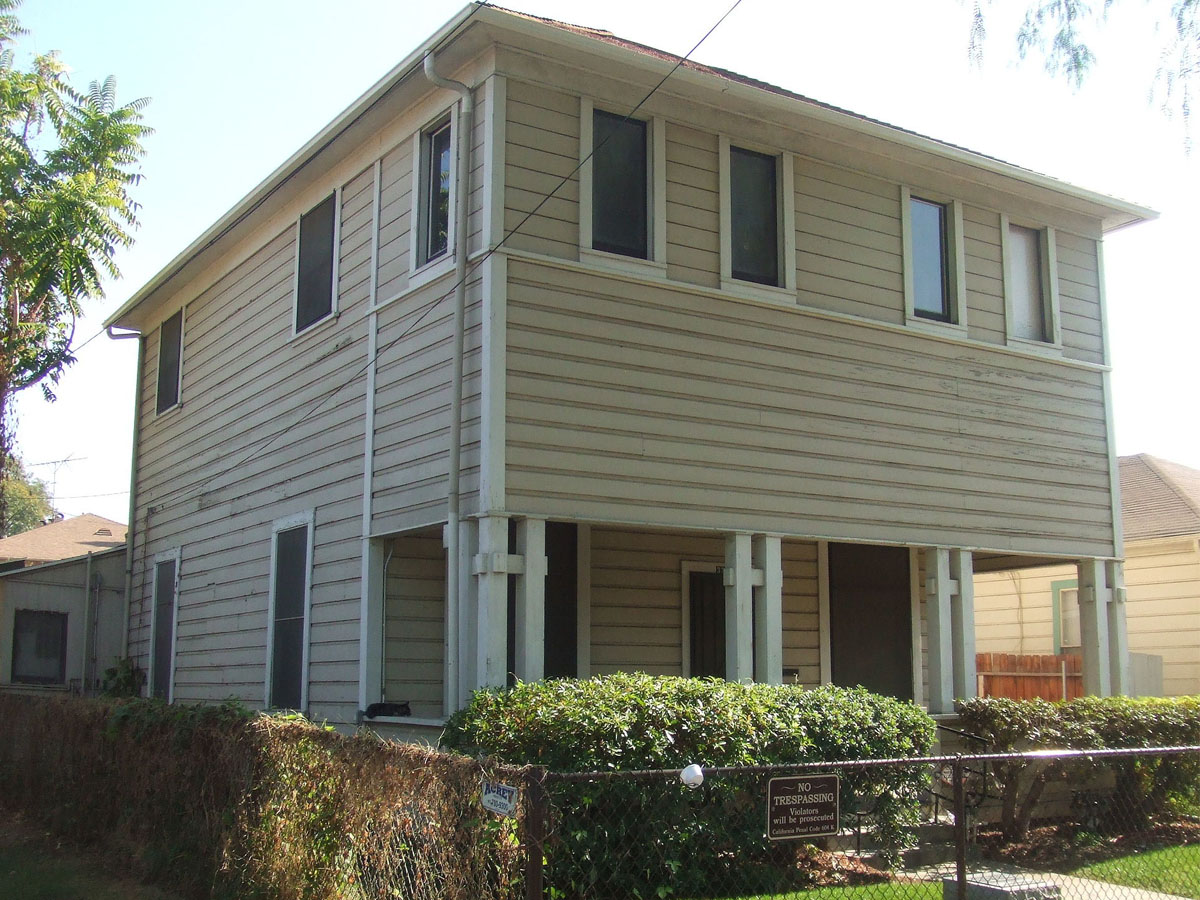
After WWII, Sumi Harada took over the house and helped other Japanese families who lost their homes by boarding them. In 1977, the home was designated an official landmark and, in 1991, it became a National Historical Landmark. In 2004, four years after Sumi Harada died, the property was handed over to his brother, who donated the house to the Riverside Metropolitan Museum. The house has not been well-maintained, however, and is on the verge of collapse. Local efforts to rehabilitate the house are ongoing.
 Author
Ron Winkler
Last Updated: November 08, 2023
Author
Ron Winkler
Last Updated: November 08, 2023
